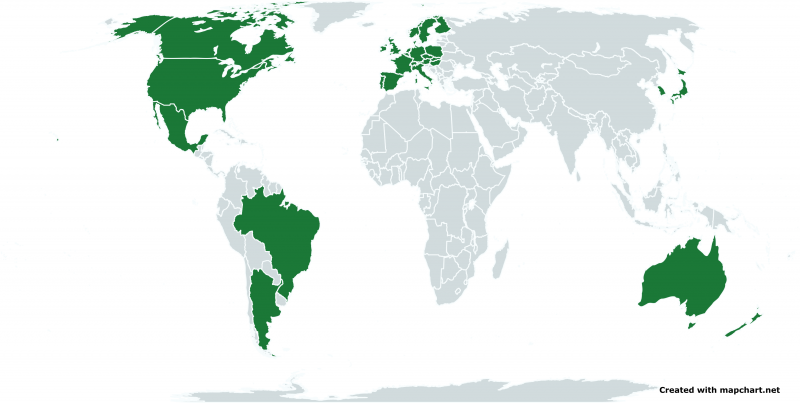August 1900: Cotehele Lodge moved to Calstock Masonic Hall
In August 1900, Cotehele Lodge No. 2166 relocated to the newly constructed Calstock Masonic Hall on Commercial Road.
1901: Calstock Community Primary School built
Calstock Community Primary School was built in 1901.
January 1902: Calstock Community Primary School opened
Calstock Community Primary School officially opened on January 6, 1902, initially consisting of two main classrooms.
1904: Viaduct construction began
Construction of the Calstock Viaduct began in 1904.
August 1907: Viaduct first crossed by truck
On August 8, 1907, the viaduct was first crossed by a truck during its construction phase.
March 1908: Viaduct first used by passengers
On March 2, 1908, the viaduct was first used by passengers, marking its operational commencement.
March 1908: Calstock railway station opened
The Calstock railway station opened on March 2, 1908, enhancing transport links in the area.
1908: Connecting line to Calstock opened
In 1908, following the opening of the LSWR mainline railway at Bere Alston, a connecting line to Calstock was opened as a passenger line.
1918: Gunnislake appeal for separate parish fails
In 1918, Gunnislake's appeal to become its own separate parish was unsuccessful due to insufficient funds.
1934: Calstock Parish Council established
Calstock Parish Council was established in 1934, following the amalgamation of Calstock Rural District with the Rural District of St Germans.
1934: Calstock Rural District abolished
In 1934, Calstock Rural District was abolished and merged with Callington Urban District to form St Germans Rural District.
August 1968: Latchley church closed due to woodworm
In August 1968, Latchley church was closed to worshippers following a severe woodworm infestation.
1974: St Germans Rural District amalgamated
In 1974, the St Germans Rural District was amalgamated with Liskeard Rural District to create Caradon.
1985: Latchley church sold
In 1985, Latchley church was sold and converted into a dwelling.
2000: Early Bronze Age Settlement
Around 2000 BCE (Early Bronze Age), evidence suggests a settled population existed on Church Hill.
2001: Population census
In 2001, the parish of Calstock had a population of 6,095 according to the census.
2002: Calstock Community Primary School centenary
In the summer of 2002, Calstock Community Primary School celebrated its centenary.
2007: Archaeological excavations on Church Hill
In 2007, archaeological excavations commenced on Church Hill, led by the University of Exeter, to uncover the area's history.
2009: Caradon abolished
In 2009, Caradon was abolished, resulting in the unification of Cornwall under a single unitary authority, Cornwall Council.
2009: Peterloo Poets closed down
In 2009, Peterloo Poets, a poetry publisher based in Calstock, closed down.
2010: Harry Chambers Honored
In 2010, Harry Chambers, founder of Peterloo Poets, was honoured for his services to Poetry in the New Year Honours.
2011: Archaeological excavations on Church Hill
In 2011, archaeological excavations on Church Hill, conducted by the University of Exeter, continued, revealing more evidence of past settlements.
2011: Population census
In 2011, the census recorded an increase in the parish population to 6,431.
2014: Stoke Climsland School federated with Calstock
In 2014, Stoke Climsland School federated with Calstock Community Primary School to share resources.
2021: Dorothy Kirk elected councillor
Since 2021, Dorothy Kirk of the Labour Party has been the councillor representing Calstock on Cornwall Council.
May 2025: Calstock Ferry service resumed
The Calstock Ferry service resumed operations in May 2025 after being absent for ten years, now operating with a solar-powered ferry.
Trending

4 months ago Xbox Cloud Gaming's "Stream Your Own Game" Arrives on PC App with New Games.

12 minutes ago Thanksgiving Dinner Cost Drops in 2025: Survey Reveals Cheaper Meal.

1 hour ago Chloé Zhao discusses 'Hamnet', Buffy revival, and navigating Hollywood as neurodivergent director.
1 hour ago Radio Stations Embrace Christmas Music; Country Artist Releases Holiday Track After Stroke

1 hour ago Jason Bateman's Sister Justine; Amy Poehler's SNL Chimpanzee Scare Detailed.
1 hour ago Safe Turkey Thawing and Cooking Tips for a Delicious and Healthy Thanksgiving Dinner
Popular

XXXTentacion born Jahseh Dwayne Ricardo Onfroy was a controversial yet...

William Franklin Graham III commonly known as Franklin Graham is...

Cristiano Ronaldo often nicknamed CR is a Portuguese professional footballer...

Candace Owens is an American conservative political commentator and author...

Michelle Obama is an American attorney author and former First...

Marjorie Taylor Greene known as MTG is a far-right American...
